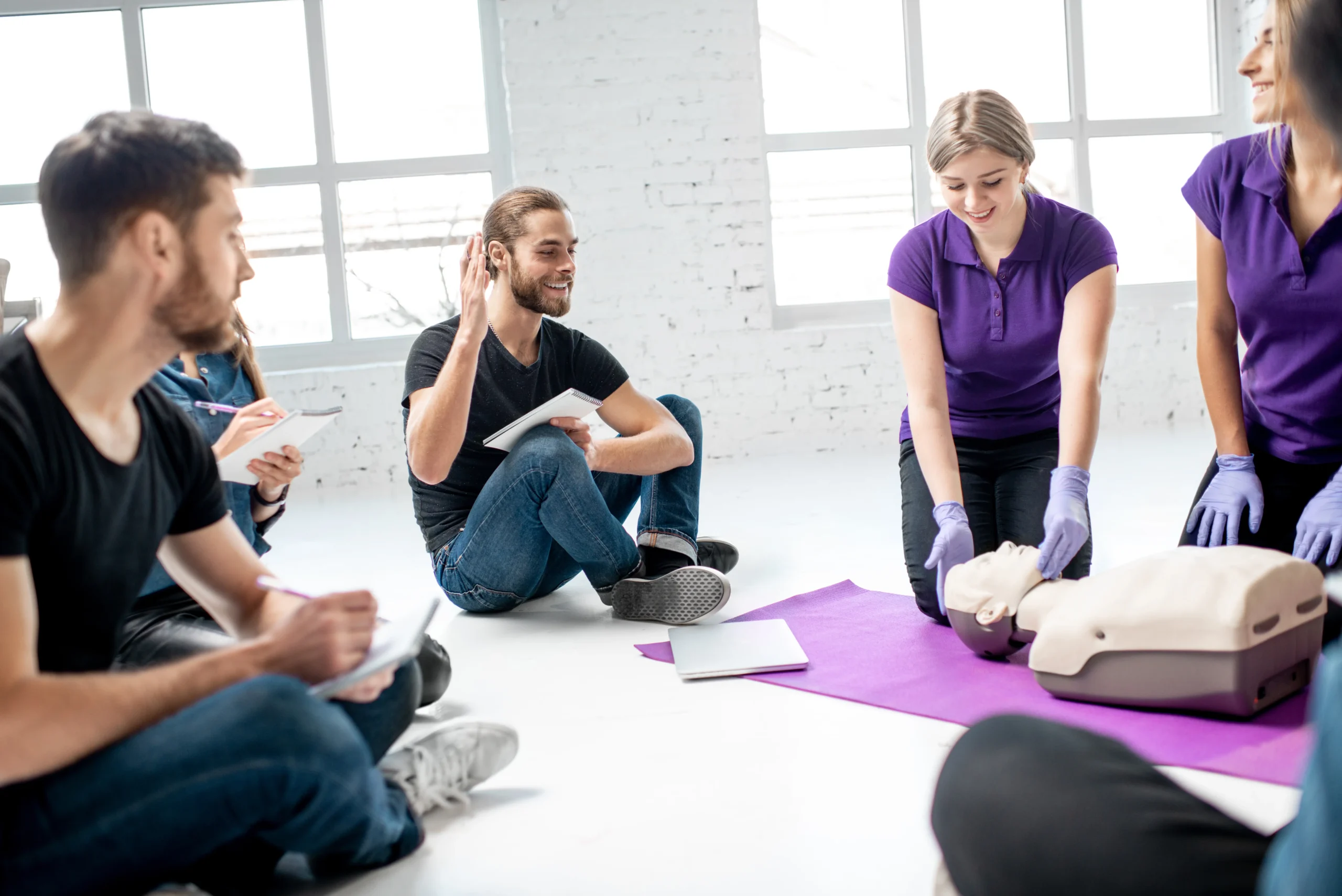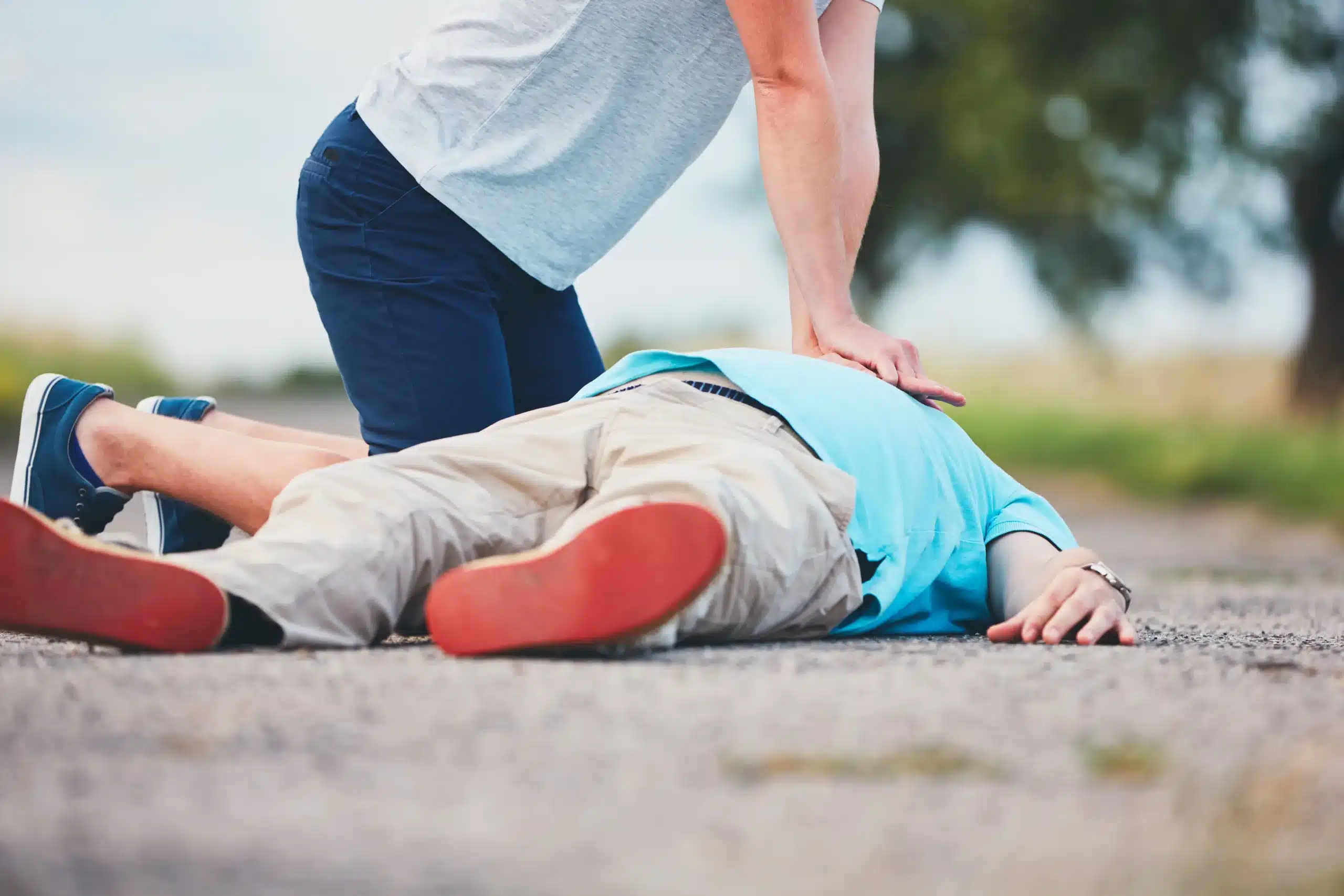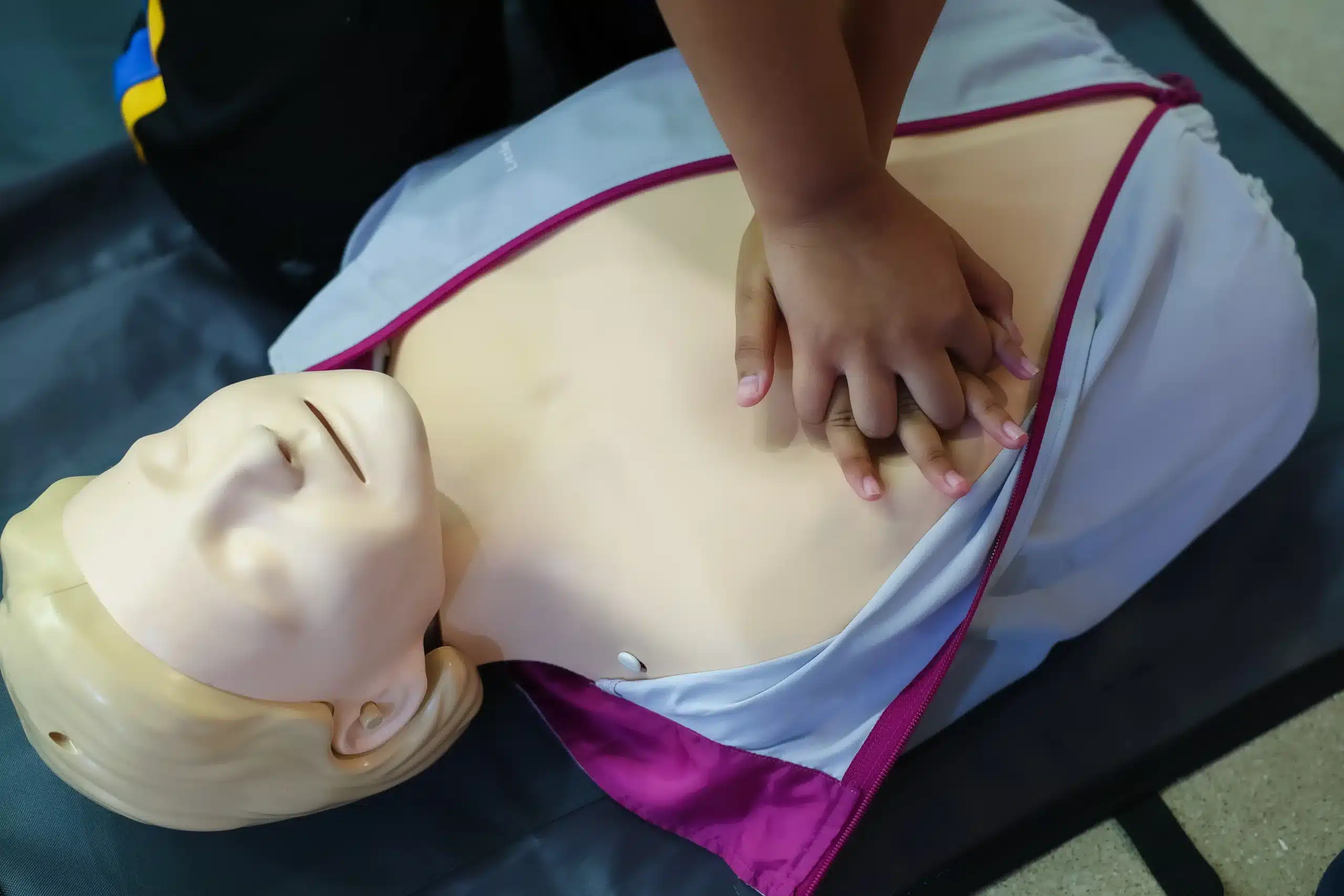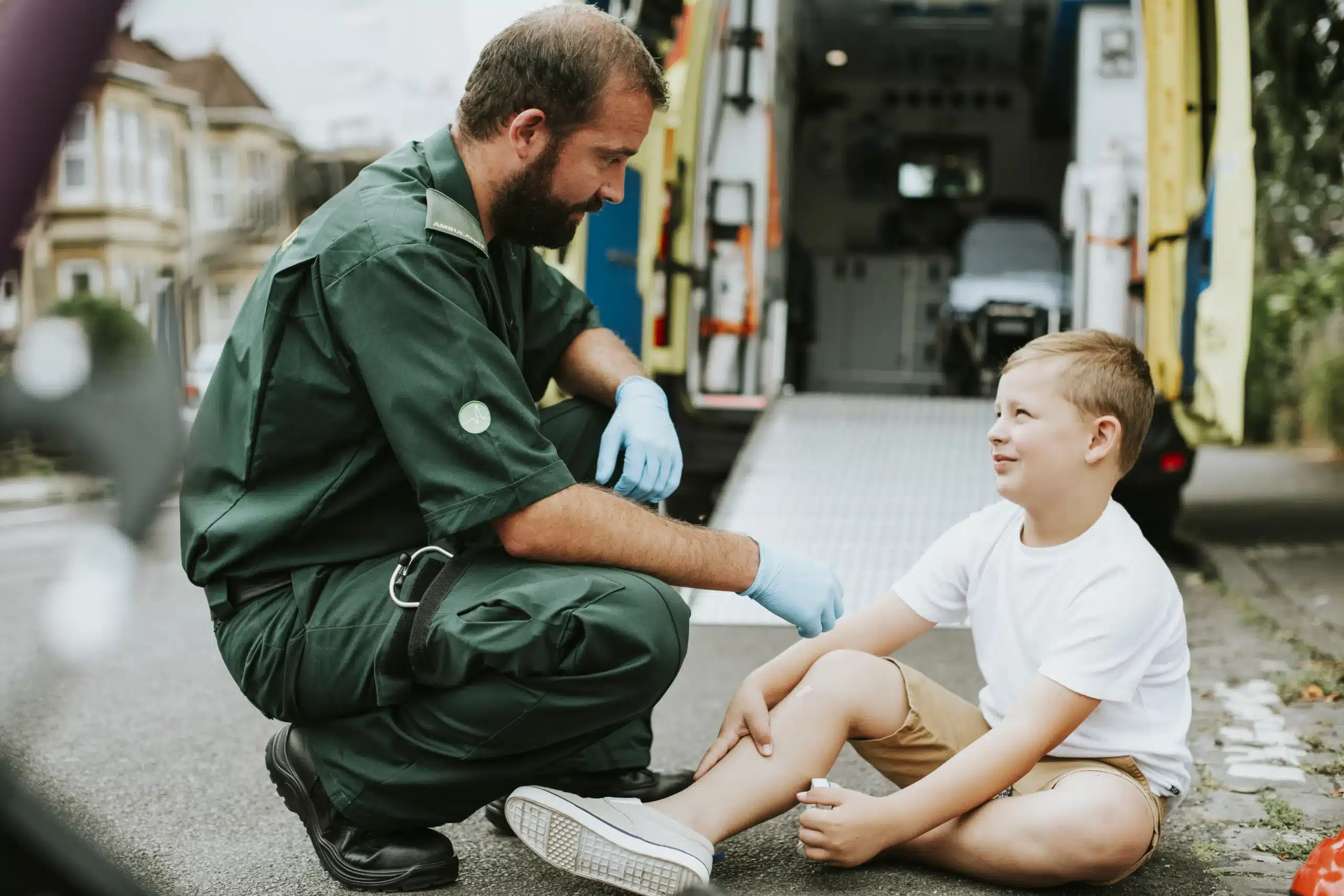In a medical crisis, your actions can be the difference between life and death. BLS certification classes in Petaluma empower you with the knowledge and skills to respond effectively in such critical situations. This comprehensive guide explores the ins and outs of BLS certification, from course content and schedules to instructor qualifications and renewal processes. Whether you’re pursuing a career in healthcare or want to be prepared for any emergency, understanding the importance of BLS is paramount. Join us as we explore the world of BLS certification and discover how you can become a vital link in the chain of survival.
Key Takeaways
- BLS certification empowers you to respond to emergencies: Whether you work in healthcare or not, BLS training gives you the skills to confidently handle life-threatening situations. Find a course that fits your needs and learning preferences.
- Choosing the right BLS course matters: Consider factors like the instructor’s experience, the curriculum, and the training format (in-person, blended, or online) when selecting a program. Hands-on practice and skills assessments are key for mastering these techniques.
- Maintain your skills and certification: Remember to renew your BLS certification every two years. Regularly refreshing your knowledge and skills ensures you’re always prepared to provide effective assistance in emergencies.
What is BLS Certification?
Basic Life Support (BLS) certification is a vital credential for anyone in healthcare, and really, for anyone who might find themselves needing to respond to a medical emergency. BLS training gives you the essential skills to handle crises effectively—think CPR, using an AED (Automated External Defibrillator), and recognizing the early signs of heart attacks or strokes. It’s about being prepared and knowing what to do when it matters most. If you are interested in learning these skills, find more information on our BLS Certification page.
Getting certified involves learning the theory and then showing you can put it into practice. You’ll learn the techniques and then be assessed to make sure you can confidently use them in a real-life emergency. The American Heart Association (AHA) requires an in-person skills assessment for certification, so you know you’re getting practical, hands-on training. This focus on hands-on learning is key to mastering these life-saving techniques.
Once you complete the BLS course, you’ll receive your AHA BLS certification. This certification is recognized across the country and is often a prerequisite for many healthcare jobs. It’s a valuable asset, both professionally and personally.
BLS Classes in Petaluma: What You Need to Know
If you’re looking for BLS certification in Petaluma, you’re in luck. Several organizations offer comprehensive training, including Safety Training Seminars. This section covers what you should know about BLS classes in the area.
Available BLS Class Types
Safety Training Seminars offers a range of American Heart Association (AHA)-certified courses, including BLS, ACLS, PALS, First Aid, and CPR in Petaluma. They offer convenient and affordable in-person AHA BLS classes for those in or near Petaluma, Rohnert Park, and Novato. Classes are held daily at 921 Transport Way, Suite 30, Petaluma, CA 94954, with extended hours (8 am to 10 pm), making it easy to fit the training into your schedule. You can explore options like discount group classes on their website.
Benefits of Local BLS Training
Getting your BLS certification empowers you to save lives. Whether you work in healthcare or not, BLS training gives you the skills to respond effectively during emergencies like heart attacks, strokes, or choking. The emphasis on AHA certification is crucial for credibility and recognition in the healthcare field. These courses go beyond theory, emphasizing hands-on practice with manikins and realistic scenarios. This practical approach builds confidence and ensures you’re prepared to act quickly and efficiently in a real emergency. Learning locally also means you’re contributing to your community’s safety net.
Top BLS Certification Providers in Petaluma
Finding the right BLS certification course means understanding what each provider offers. Here’s a closer look at some of the top BLS providers in Petaluma:
Safety Training Seminars
Safety Training Seminars offers a comprehensive range of American Heart Association-certified courses, including BLS, ACLS, PALS, First Aid, and CPR training in Petaluma. They focus on providing high-quality instruction at competitive rates, and even offer a low price guarantee. Check their website for more information and details on group discounts.
Petaluma CPR Classes
Petaluma CPR Classes offers daily CPR, BLS, ACLS, PALS, and First Aid training. This frequent scheduling makes it easier to find a class that works for you. They emphasize hands-on training and personalized instruction.
In Home CPR
For those seeking training at their location, In Home CPR brings the classroom to you. They travel to Petaluma businesses and homes to teach CPR, BLS, and First Aid classes for certification from ASHI, Red Cross, and the AHA. This convenient option eliminates the need for commuting and allows for customized group training.
Vive CPR
Vive CPR offers a variety of first aid and CPR certification courses throughout Sonoma County, including Petaluma, as well as the San Francisco Bay Area. They provide AHA-certified courses, giving you nationally recognized credentials.
American Red Cross
The American Red Cross offers a blended learning Basic Life Support (BLS) program that combines online learning with in-person skills sessions. This flexible format allows you to learn at your own pace before attending a hands-on session.
BLS Class Costs & Value in Petaluma
Figuring out BLS class costs in Petaluma can be tricky. While many training providers emphasize competitive pricing, they often don’t publish specific numbers online. Your best bet for accurate pricing is to contact providers directly. A quick phone call or email can save you time and ensure you’re getting the best deal.
Standard Pricing & Group Discounts
Many CPR training centers, including those offering BLS certification in Petaluma, offer group discounts. This can be a great way to save money, especially if you’re coordinating training for your workplace or a group of friends. Check with individual providers like Safety Training Seminars to see what group discounts they offer. Bundling courses, such as combining BLS with First Aid or CPR, might also unlock additional savings.
Low Price Guarantee
Safety Training Seminars offers a low price guarantee on their BLS renewal courses in Petaluma. This gives you extra confidence that you’re getting a competitive rate. If you’re renewing your certification, compare their prices with other local providers.
Considering Additional Fees
Beyond the standard course fees, keep in mind potential additional costs. For example, some providers charge extra for on-site training. Always double-check with the training center about any extra fees for things like on-site training, certification cards, or study materials, so you’re not surprised by unexpected costs.
BLS Class Schedules & Locations
Finding a BLS class that fits your schedule shouldn’t be a hurdle. Luckily, Petaluma offers a variety of options to accommodate busy professionals, students, and anyone looking to get certified.
Flexible Options: Weekdays, Weekends, & More
Many training centers in Petaluma understand the need for flexibility. Providers like Safety Training Seminars offer classes daily, often with extended hours. For example, their location at 921 Transport Way, Suite 30 offers classes from 8 am to 10 pm, allowing you to choose a time slot that works for you, whether it’s before work, after work, or on the weekend. This makes it easier to fit BLS training into your already packed schedule.
Online & Hybrid Courses
If traditional classroom settings pose a challenge, online and hybrid BLS courses are a great alternative. These courses typically involve an online component where you can learn the theoretical material at your own pace. You’ll then schedule an in-person skills session to practice techniques and complete the certification testing. This blended learning approach offers the convenience of online learning with the essential hands-on training required for BLS. Check with providers like Bay Area CPR to see if they offer this hybrid model. It’s a popular option for those juggling work, family, and other commitments. Some providers require students to complete the online portion before scheduling their in-person skills practice and testing.
On-Site Training for Businesses
For businesses in Petaluma, on-site BLS training is a valuable option. Companies like In Home CPR bring the training directly to your workplace. This eliminates the need for employees to travel to a separate training center, saving time and minimizing disruption to your operations. On-site training is particularly beneficial for larger teams, as it ensures everyone receives consistent instruction and can practice together in a familiar environment. It’s a smart way to prioritize workplace safety and equip your team with the skills to respond effectively in emergencies.
What to Expect in a BLS Class
So, you’ve signed up for a BLS class—congratulations! Now, you’re probably wondering what awaits you. BLS certification courses equip healthcare providers and aspiring instructors with the skills to respond to life-threatening emergencies. Safety Training Seminars offers a range of American Heart Association-certified courses, including BLS, ACLS, and PALS, right here in Petaluma. Let’s break down what a typical BLS class entails:
Course Duration & Curriculum
BLS classes are designed to be comprehensive yet manageable. You can find BLS training in various formats, including in-person classes and blended learning (online and in-person components). The curriculum covers essential life-saving techniques, including high-quality CPR for adults, children, and infants, along with how to relieve choking and use an AED. You’ll also learn about the chain of survival and how to work effectively as part of a team during a cardiac arrest.
Hands-on Training & Skills Assessment
The American Heart Association (AHA) requires an in-person skills assessment component for certification. BLS training isn’t just about memorizing steps; it’s about applying those steps in dynamic scenarios. Expect plenty of hands-on practice with mannequins, allowing you to develop muscle memory and confidence in your abilities. Instructors provide feedback and guidance throughout the course, ensuring you’re performing each skill correctly. This in-person training is crucial for mastering the techniques and responding effectively in real-life situations.
Certification Process
After successfully completing your BLS course with Safety Training Seminars, you’ll receive your AHA BLS certification. You will receive your physical certification card on the day of class. This certification is valid for two years, after which you’ll need to recertify. This ensures your skills remain sharp and up-to-date with the latest AHA guidelines. You can find more information about our low price guarantee and discounts for group classes on our website.
BLS Instructor Qualifications & Training Quality
When your health is on the line, you want to know the person providing CPR instruction is truly qualified. Choosing a reputable BLS course means looking closely at the instructors’ credentials and the overall quality of the training program. Here’s what to consider:
Instructor Certification & Experience
Experienced, certified instructors are essential for any successful BLS course. They bring real-world knowledge and practical skills to the classroom, creating a richer learning experience. Look for instructors certified by a nationally recognized organization like the American Heart Association. Our instructors at Safety Training Seminars hold current certifications and participate in ongoing training to stay up-to-date with the latest BLS guidelines. This commitment to continuing education ensures our students receive high-quality instruction. You can learn more about our BLS certification course on our website. Becoming a BLS instructor involves thorough training, so you can be confident they’ve invested time and effort into mastering these life-saving skills.
Student Feedback & Course Evaluations
A high-quality BLS training program values student feedback. Constructive criticism helps improve the curriculum, teaching methods, and the overall learning environment. At Safety Training Seminars, we actively solicit feedback from our students through course evaluations. We believe that incorporating student feedback is crucial for continuous improvement. This feedback loop allows us to refine our courses and ensure they meet the needs of our students. We use this information to make adjustments, ensuring an engaging and effective learning experience. Just as student feedback plays a vital role in curriculum improvement in other educational settings, it’s equally important in BLS training. You can find more information about our commitment to quality and our low price guarantee on our website.
Choosing the Right BLS Class
Picking the right BLS class isn’t one-size-fits-all. It depends on your background, learning style, and what you need the certification for. Let’s break down how to find the perfect fit.
Healthcare Provider vs. Layperson Courses
One of the first things to consider is whether you need a healthcare provider or layperson BLS course. BLS certification courses equip healthcare providers and aspiring instructors with the skills to respond to life-threatening emergencies. This often involves a deeper dive into patient assessment, advanced airway management, and pharmacology than a layperson course. Layperson courses, while still comprehensive, focus on the fundamentals of CPR, AED use, and choking relief for adults, children, and infants. Think about your current role and future goals to determine which course aligns best with your needs. If you’re unsure, contact a training provider like Safety Training Seminars for guidance.
Key Factors to Consider
Beyond the course type, several other factors play a role in choosing the right BLS class. Do you prefer hands-on, in-person instruction, or does the flexibility of online learning appeal to you? BLS training is available in various formats, including in-person classes and blended learning (online and in-person components). Consider your schedule and how much time you can commit. Look at weekday, weekend, and evening options to find a time that works. Finally, location matters. Choose a training center that’s conveniently located, like Petaluma CPR Classes, serving Petaluma, Rohnert Park, and Novato.
BLS Renewal & Recertification
Keeping your BLS skills sharp is essential for providing effective care during emergencies. This section covers everything you need to know about renewing your BLS certification in Petaluma.
How Long is BLS Certification Valid?
BLS certification is typically valid for two years. After two years, you’ll need to renew your certification to stay up-to-date with the latest American Heart Association guidelines and best practices. This ensures you’re always prepared to deliver the highest quality care.
Renewal Requirements & Process
Renewing your BLS certification involves completing a refresher course, which reviews essential BLS skills and knowledge. These renewal courses are generally shorter than the initial certification course, focusing on key updates and reinforcing practical skills. Many providers, including Safety Training Seminars, offer BLS renewal classes in Petaluma that can be completed in a few short hours. You’ll receive a new certification card upon successful completion of the course, often on the same day.
Get the Most Out of Your BLS Certification
Getting your BLS certification is a rewarding experience, but how can you ensure you’re truly prepared and ready to use your skills? Here’s how to maximize your training, from pre-class prep to real-world application:
Preparing for Class
Before your BLS class, familiarize yourself with any pre-course materials provided by your instructor or training center. This might include manuals, videos, or online modules. Reviewing these resources can give you a head start and help you absorb the information more effectively during class. Remember, BLS certification courses equip healthcare providers and aspiring instructors with the skills to respond to life-threatening emergencies, so preparation is key. If you’re in the Petaluma area, research local providers like Safety Training Seminars to find the right class for you.
Applying Your Skills
BLS certification empowers you to save lives. Whether you work in healthcare or not, BLS training provides the skills to respond effectively during emergencies like heart attacks, strokes, or choking. Think about scenarios where these skills might be needed—at home, at work, or even out in your community. Consider supplementing your training with a CPR and First-Aid class to further enhance your preparedness. These skills are invaluable in emergency situations. Refreshing your skills regularly and visualizing how you’d respond in different situations can maintain your confidence and prepare you to act when it matters most. You can find comprehensive BLS courses covering essential skills such as CPR, AED usage, and first aid with providers like Safety Training Seminars in Petaluma, Rohnert Park, and Novato, CA.
Related Articles
- BLS Renewal Classes in Petaluma: Your Complete Guide – Petaluma CPR Classes
- BLS Certification Near Me: A Practical Guide – Petaluma CPR Classes
- BLS Training Near Me: A Practical Guide – Petaluma CPR Classes
- BLS Classes in Petaluma: Your Certification Guide – Petaluma CPR Classes
- AHA BLS Renewal Near Me: Your Complete Guide – Petaluma CPR Classes
Frequently Asked Questions
How do I choose between BLS and CPR training?
BLS (Basic Life Support) certification is generally geared towards healthcare providers and those in related fields, covering a broader range of skills like CPR, AED use, and team response during emergencies. CPR (Cardiopulmonary Resuscitation) training focuses specifically on the technique of CPR and is suitable for anyone wanting to learn this life-saving skill, even without a healthcare background. Consider your current profession and whether your workplace requires a specific certification.
What does the AHA BLS certification cover?
AHA BLS certification covers core life-saving skills, including high-quality CPR for adults, children, and infants, the use of an AED, and relief of choking. It also emphasizes the importance of the chain of survival and effective team dynamics during medical emergencies. The training includes both theoretical knowledge and hands-on practice to ensure you can confidently apply these skills in real-life situations.
Are there online BLS certification options available in Petaluma?
Yes, many providers offer blended learning options, combining online coursework with in-person skills sessions. This allows you to study the theoretical material at your own pace before demonstrating your skills in a practical setting. Be sure to confirm with the training center that the online portion meets the AHA requirements for certification.
How much does BLS certification cost in Petaluma?
BLS certification costs vary depending on the provider and the type of course. Contacting training centers directly is the best way to get accurate pricing information. Many providers offer group discounts, so inquire about those if you’re training with colleagues or friends. Also, check if there are any additional fees for things like study materials or certification card processing.
How often do I need to renew my BLS certification?
BLS certification is typically valid for two years. Recertification involves completing a refresher course to ensure your skills and knowledge are current with the latest AHA guidelines. Check with your certifying organization or training provider for specific renewal requirements and available courses in your area.





